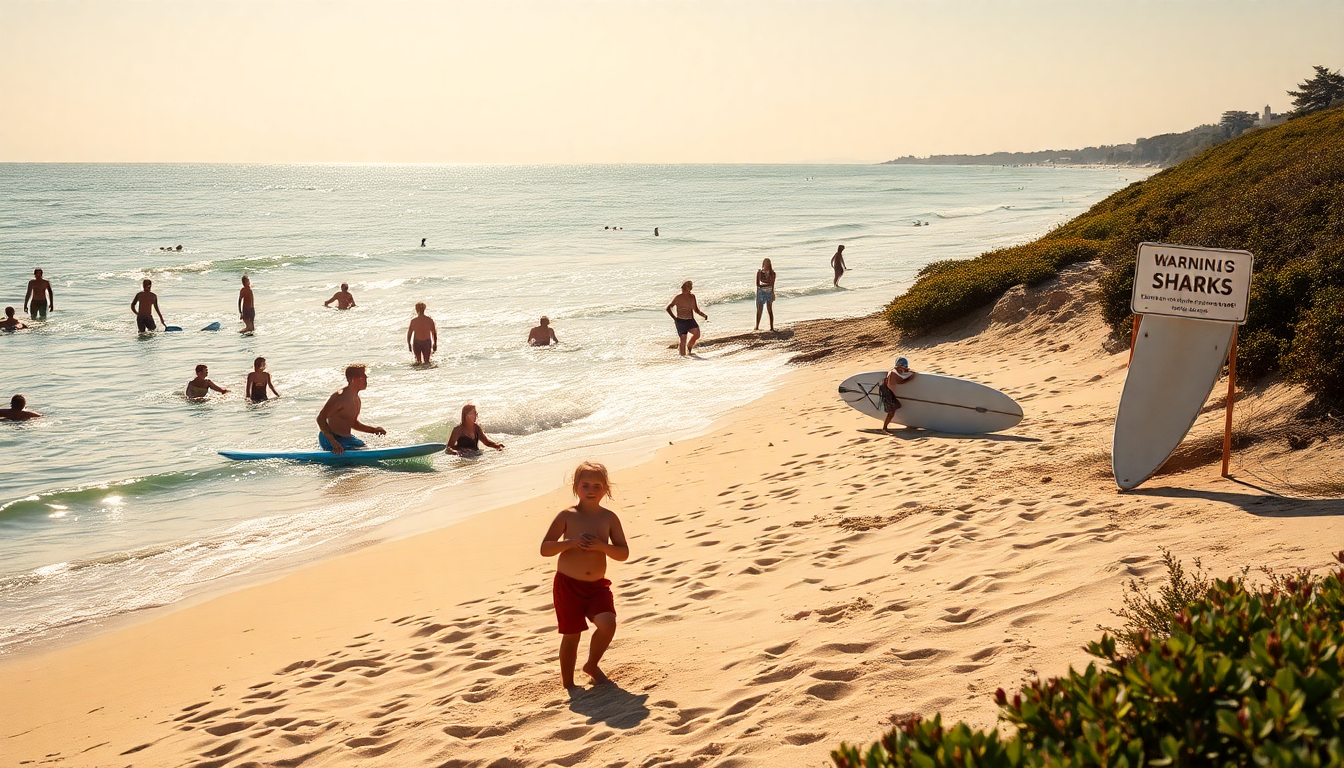Table of Contents
As summer rolls in, beach lovers can’t wait to soak up the sun and ride the waves. But with recent shark sightings off the coast of Bailey Island, Maine, it’s more important than ever to understand shark behavior for a safe day at the beach.
While sharks often get a bad rap as dangerous predators, the reality is that they don’t view humans as their primary target. In this article, we’ll take a closer look at shark encounters and share practical safety tips for vacationers.
Shark Sightings and Public Awareness
In the last few weeks, Maine authorities have reported several sightings of great white sharks near Bailey Island, a spot that’s been buzzing with beach activity. Following these sightings—five years after the area’s first documented fatal shark attack—the Harpswell Marine Resources and Harbor Management are urging beachgoers to stay alert.
To keep everyone informed, officials have rolled out shark notification flags throughout Cedar Beach.
If you happen to see a shark, the best thing to do is stay calm. Snap a quick photo of the shark and report your sighting to local authorities.
This not only helps them keep tabs on shark activity but also allows for necessary safety measures to be put in place. Don’t worry; swimming is still allowed, and a notification system is in place to alert visitors if a shark is spotted nearby.
As summer crowds flock to the water, understanding shark behavior can help ease any fears. Sharks are naturally curious creatures, and their presence near popular swimming spots often means there are plenty of food sources, like schools of fish, around.
It’s crucial to remember that while sharks may be nearby, they aren’t automatically aggressive towards humans.
Historical Context and Safety Measures
The tragic incident from July 2020, when a woman was fatally injured by a shark while swimming off Bailey Island, serves as a stark reminder of the importance of awareness in the water. Two kayakers quickly reached the injured swimmer, but despite the valiant efforts of first responders, her injuries proved fatal. This sad event underscores the need for caution and preparedness when enjoying water activities in areas where sharks are known to roam.
Statistics further highlight the need for vigilance. The Florida Museum of Natural History’s International Shark Attack File recorded 71 shark bites in the United States in recent years, with 47 of those being unprovoked. While those numbers might sound scary, they also reveal just how rare serious shark encounters are compared to the millions of people who safely enjoy the ocean each year.
Local authorities are dedicated to keeping beachgoers safe, and they’ve established clear guidelines for what to do if a shark is spotted. Through public education and proactive measures, officials aim to minimize risks and prevent potential incidents. Visitors should take the time to familiarize themselves with these guidelines and stay updated through local notifications.
Conclusion and Preparation for Beachgoers
As families and friends gear up for summer beach outings, knowing about shark behavior and staying informed about local sightings is key to a safe experience. Being aware of your surroundings, following safety protocols, and respecting the ocean’s wildlife can significantly lower the chances of negative encounters. After all, the ocean is their home, and with the right knowledge, beachgoers can fully enjoy their time in the water while minimizing risks.
Ultimately, the main takeaway is to stay calm and informed. By understanding the ocean’s ecosystem and recognizing the role sharks play within it, visitors can dive into their summer activities with confidence. Remember, safety comes first! Keeping an eye on local advisories and respecting marine life will help ensure a memorable beach season.





